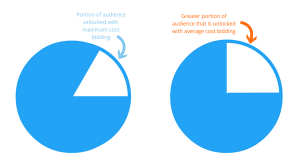Columnist Josh Todd explains why omnichannel marketing will be increasingly necessary for keeping your customers engaged and moving them through the sales funnel.

Picture it: Boston, 2017. You’re sitting in the crowded airport waiting for your flight, trying to kill some time before your flight to New Orleans by playing around on your phone. First you search for some of the top restaurants in your destination to map out your ever-important Cajun meals. Once that’s settled, you pop over to Instagram to see what everyone else is up to.
Then, an ad for a restaurant app ends up in your feed. Might as well download it, since you’ll be searching for places all week. Fast forward to Friday night, and you get an email from the app for discounted happy hour drinks. You take advantage of the offer — you eat, you drink, and you are happy.
These various brushes with Louisiana’s finest eats were no coincidence. There are many channels that influence a person’s path to purchase, and each should hold importance for a marketer. In fact, an astounding 92 percent of people utilize more than one channel when they browse — from apps and websites to ads and old-fashioned trips to a store.
The case of the Southern cuisine is a prime example of omnichannel marketing, which hits from all angles and engages people wherever they are. It may already be a buzzword you’re growing tired of hearing, but it’s here to stay — and mobile is a really important part of it. Since people frequently hop between channels while interacting with a brand, omnichannel marketing allows marketers to pick up on where a user has left off and keep them moving through the funnel.
Let’s get personal
On top of that, more than half of people feel that brands should recognize them as the same person across all channels, so the better the insights, the better the campaigns. This jibes with our own research, which finds that users are comfortable sharing their data if it means getting to know them on a better level. And, luckily for brands, omnichannel shoppers bring in big bucks, spending twice as much as people who only shop in-store.
With the ubiquity of mobile devices these days, there’s no arguing that mobile must be a critical piece of your omnichannel marketing strategy. In fact, 58 percent of a user’s digital media time is spent in mobile apps, versus 33 percent on desktop websites.
But one of the biggest mistakes marketers make is not integrating their mobile app into their overall marketing channels. All too often, apps are siloed from the rest of the marketing strategy, resulting in a disconnected brand experience for the user. Instead, marketers should promote and infuse their apps across all other channels to create a seamless experience for users, which will not only delight your customers, but will also help keep them around.
Capturing customer data and recording interactions with users over time is critical to understanding their relationship with your brand, allowing you to fine-tune the messaging to meet expectations. When done right, it could be the very thing that transforms new users into loyal customers.
Keeping the message consistent and in line with brand guidelines is important because it shows people they’re in the right place, and it helps create a sense of connection between your brand and your users. If someone were to access your brand through various channels but got a different experience each time, it could create confusion and distrust, leaving them to ditch your brand altogether.
Getting started with omnichannel marketing
Need a way to get started with your omnichannel strategy? Here’s how:
- Get your team on board. An omnichannel strategy cannot be built in a day, and it certainly cannot be built by one person. Align all of your marketing teams from the get-go with the common goal of engaging customers where they are.
- Map your user journey. Sit down, grab a beignet, and map out every different way you interact with your existing users (and those you wish to acquire). Think: email, digital ads, social, traditional TV — the list goes on. How does each channel interact with customers, and how do their goals and behaviors differ by channel?
We live our lives in many places, both physically and digitally. It takes more than one touch point to build the kind of two-way relationships that both brands and users want. After all, new customers don’t become brand fanatics through one touch point.
Some opinions expressed in this article may be those of a guest author and not necessarily Marketing Land. Staff authors are listed here.
Marketing Land – Internet Marketing News, Strategies & Tips
(55)








